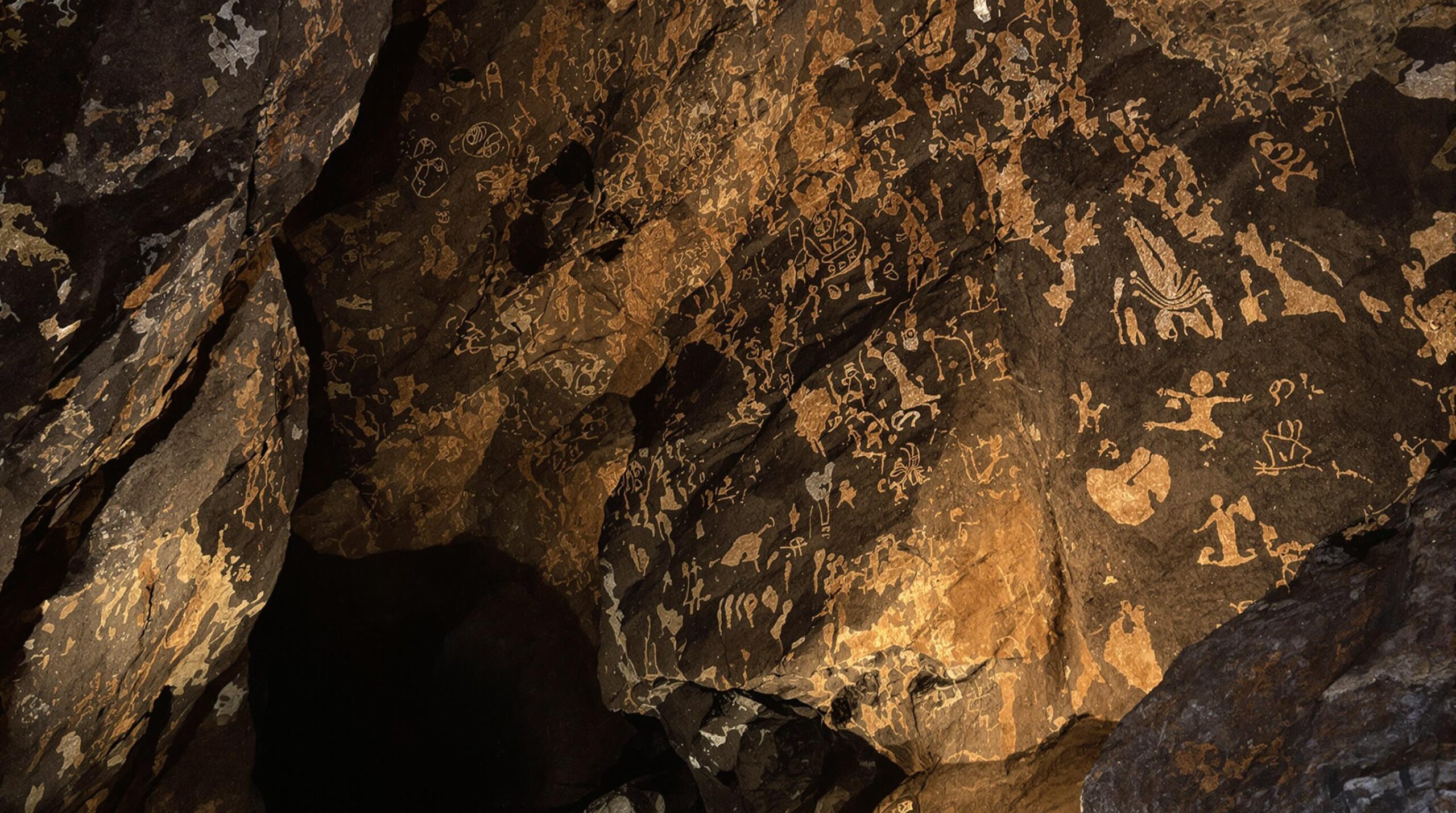A groundbreaking discovery has excited archaeologists and historians worldwide. Scientists have uncovered the world’s oldest known rock art in a remote cave. This revelation offers an unprecedented glimpse into the creativity and lives of early humans.
The Site of a Remarkable Find
The cave, known as Leang Karampuang, lies deep within the Maros-Pangkep region of Sulawesi, Indonesia. Dense forests and rugged limestone cliff faces shelter this area. Isolation has preserved the rock art for tens of thousands of years, protecting it from the elements and human interference.
Researchers from Griffith University, Indonesia’s National Research and Innovation Agency, and Southern Cross University led the effort. They navigated difficult terrain, demonstrating remarkable persistence and determination.
Dating the Ancient Artwork
The team dated this Sulawesi cave art using uranium-series analysis. This method measures trace uranium isotopes in the calcite layers covering the artwork. Scientists use this technique to determine the minimum age of the paintings, as the calcite forms only after the images appear.
Dating indicates the painting is at least 51,200 years old. This makes it the oldest known example of figurative rock art found anywhere in the world. Other ancient artworks, like those in Europe and Australia, date back approximately 40,000 years. The Sulawesi painting, therefore, predates these examples by over 10,000 years.
Details of the Ancient Painting
The artwork depicts a hunting scene showing three human-like figures interacting with a wild pig. The details suggest the painter intended to communicate a story or ritual. The figures exhibit distinctive head and body shapes, suggesting early people’s symbolic thinking was highly advanced.
The use of red pigment adds another layer of significance. Artists made the colors from ochre, a naturally occurring mineral. They applied it with their fingers or basic tools, demonstrating both creativity and resourcefulness.
What This Means for Human History
Art is a window into the minds of prehistoric people. This discovery forces scholars to reconsider the timeline of early human creativity. Earlier, experts often credited Europe with producing the world’s oldest sophisticated rock art. However, the Sulawesi artwork now pushes the origin story of artistic creativity much further into the Asian continent.
The painting also challenges perceptions about the development of symbolic thought. Some researchers believe complex art represents a major leap in cognitive evolution. The Sulawesi scene suggests our ancestors possessed imagination and cooperation abilities much earlier than previously assumed.
The Spread of Homo sapiens
This discovery gives crucial insight into migration patterns. Modern humans likely entered Southeast Asia over 50,000 years ago. The artwork’s age confirms that they settled and flourished throughout the region quickly. Such artistry implies stable communities that supported dedicated artists and storytellers in ancient Indonesia.
Archaeologists now reconsider when and where such symbolic traditions began. Could earlier, undiscovered sites still wait, hidden in remote caves across Asia or beyond? The evidence from Sulawesi points toward a complex prehistoric society, rich in symbolism, long before similar forms appear in Europe.
Preservation and Ongoing Research
Preserving these fragile paintings poses significant challenges. Humidity, changing temperatures, and human intrusion threaten the delicate calcite layers. Experts monitor the cave microenvironment to limit further degradation. They also urge governments and local communities to value and protect these invaluable sites.
Ongoing international partnerships are vital. Indonesian authorities, scientists, and preservationists collaborate to balance research access and conservation. Digital documentation further secures the artwork for future study, even if the physical paintings deteriorate.
The Role of Modern Technology
Advanced analytical tools have transformed rock art research in recent decades. Uranium-series dating and digital imaging make previously impossible discoveries achievable. With portable equipment and non-invasive methods, scientists analyze remote and inaccessible sites more accurately and safely than ever before.
High-resolution photography captures details invisible to the naked eye. 3D models allow experts to examine surface textures and pigment composition without risking damage. These technologies will likely help researchers uncover even older works in the future.
Global Significance and the Human Story
This rock art discovery sets a new benchmark in archaeology and anthropology. It connects modern people with distant ancestors through the universal language of visual art. The painting’s age and expressive power provide concrete evidence of sophisticated thinking and storytelling abilities among early humans.
Scholars see the Sulawesi cave as proof that the urge to create and communicate visually spans continents and eras. It suggests that artistic innovation happened independently in several places, underlining the shared nature of human creativity.
Implications for Education and Awareness
Teachers and museums can draw upon this discovery to educate people about humanity’s deep past. Highlighting such shared origins fosters appreciation for different cultures and the value of heritage conservation. It also inspires new generations to explore science and history by connecting them to stories thousands of years in the making.
As knowledge about this ancient rock art spreads, more people grow aware of the vital need to protect such sites globally. Raising awareness increases international resolve to discover, document, and preserve more heritage treasures before they are lost forever.
A New Chapter in the Story of Art
The world’s oldest known rock art, discovered in the Sulawesi cave, has reshaped our understanding of prehistoric culture and creativity. It challenges old narratives and points to a rich, complex tradition of art that began far earlier than once thought. Researchers continue to explore remote caves across Indonesia and beyond, hoping for further remarkable finds.
Each discovery bridges the gap between us and the earliest humans. These findings remind us that the roots of imagination and storytelling run deep. With every new painting uncovered, the vibrant dawn of humanity’s artistic journey comes into sharper focus.

